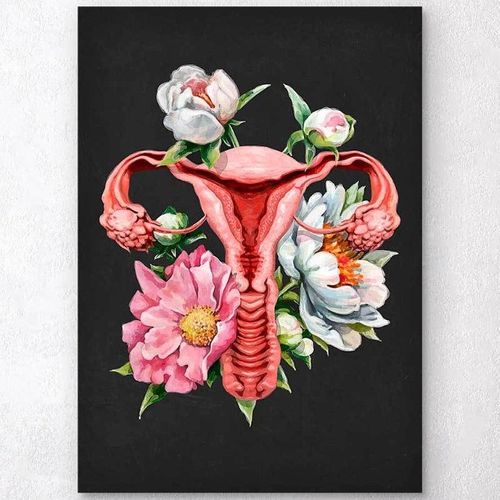What is Menstruation?
Jun 13, 2023 · 5 mins read
0
Share

[Part 1]
Trust me: even if you menstruate, chances are you don't know how exactly it works. Yes, the endometrium sloughs at the beginning of every cycle, but why does it shed? How much of it is shed? Why does it grow back? What's the point of it?
Save
Share
First of all, menstruation is a biological phenomenon seen only in human, the Old World Monkeys, and one species of bat (Rousettus leschenaulti). Humans and Old World Monkeys have a 28-day cycle that is divided into the 14-day proliferative phase, and the 14-day secretory phase.
Save
Share
From an ovarian point of view, you also hear the terms Follicular phase and Luteal phase. Menstruation occurs at the end of the secretory phase, after a sharp drop of progesterone due to conception not occurring. It is said this decrease leads to the infiltration of leukocytes.
Save
Share
Along with that, an increased expression of Metalloproteinases also helps digest the tissue, but only the functionalis zone (upper 2/3) of the endometrium. The basalis zone, the lower 1/3 of the endometrium, contains stem cells responsible for tissue regeneration.
Save
Share
Menstruation is also called the "Luteal-Follicular Transitioning Phase", during which, both serum estrogen and progesterone levels are the lowest. Surprisingly, endometrial tissue regeneration concurs with the shedding of the functionalis zone, a process called "Would Healing".
Save
Share
For that matter, estrogen is commonly thought of as a pro-inflammatory hormone that aggravates pain, and progesterone the anti-inflammatory hormone for keeping out leukocytes and dulling pain sensation.
Save
Share
But why menstruation? Rodents reabsorb their endometrium, without the endless, bloody replacement of it. In most animals with an estrous cycle, the endometrium simply thickens under estrogen, and thins under progesterone. Why all the fuss with bleeding, shedding, and regrowing?
Save
Share
The human endometrium also stands out by displaying "spontaneous decidualization", which is the differentiation of the endometrial into a fat and edematous morphology during the secretory phase, without the implantation of an embryo.
Save
Share
In rodents, decidualization can only be achieved by the insult of a foreign object such as seminal vesicles, oil, cotton thread, and of course, an embryo. Why is the human endometrium excited for nothing? We don't know for sure, is the answer.
Save
Share
If you believe we have thoroughly studied menstruation, don't. We had no idea of the cyclical changes in endometrial height until the 1940s, because historically, funding has never been generous for the field of reproductive sciences. (please see part2)
Save
Share
0